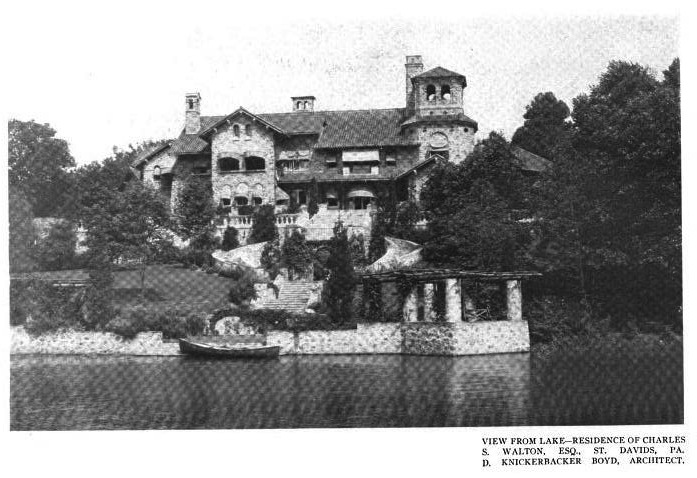Walking across Eastern University’s campus, it’s easy to feel like you’re in a Spanish villa up on a hillside with a vineyard down below. No, it’s not a Spanish Villa, and no, there’s no vineyard, but the lush, hilly landscape and beautiful Mediterranean-style buildings with their terra-cotta roofs and vaulted, medieval-like interiors are enough to make a first-time visitor momentarily forget the place still belongs in the otherwise-humdrum little city of Wayne, Pennsylvania.
Most people familiar with Eastern University know—however vaguely—that before it was a college, it was “some rich guy’s estate.” Which is true, in a sense, but there is a rich (and somewhat mysterious) history behind the campus most people are generally unfamiliar with.
What if I told you, for instance, that a Western comedy was filmed at the estate? Or that the president of the United States was one of the many famous visitors who attended banquets here? Or that an architect so famous there is now a museum in his honor laid down the roof tiles for the estate?
You probably wouldn’t see the campus in quite the same light.
In 1910, after suffering a heart attack, businessman Charles S. Walton decided to escape the demanding confines of his office life and build a country estate. Walton hired Dr. Knickerbocker Boyd, a renowned architect in the Philadelphia area, to help him design it. The estate was completed in 1913 and named “Walmarthon.” The Walton family frequently visited California, so Charles was inspired to have the buildings styled after the classic Spanish-Renaissance style which dominated southern California.
While Boyd did most of the architecture, the tiles were put in place by the legendary architect Henry Mercer. Mercer led a curious life: he began his career as an archaeologist, leading to an interest in ceramics and tiles which eventually brought him fame as an architect and the author of six books. Today Mercer’s home in Doylestown, Pennsylvania has been turned into a museum and major tourist attraction. With such prestigious designers at work in the Walmarthon’s creation, it isn’t hard to see why the site still remains such a beauty.
The Walmarthon did more than just look beautiful, however; it also acted as a vital communal gathering place for both neighbors and people from all over the world. The Waltons hosted preachers, politicians, and missionaries on furlough in addition to the poverty-stricken and people of color. President William Taft once paid a visit. The estate acted simultaneously as a meeting-house for the sophisticated and a refuge for the rejected. Today, none of this may seem overly impressive, but when one considers the time period in which it all took place, the Walmarthon was truly revolutionary. In those days most people as wealthy as the Waltons didn’t let anyone outside of the upper-class on their property. That the Waltons allowed for such diversity and intermingling of different races and classes was a testament to their generosity as well as to the love inherent in their Christian faith.
In 1918, a silent film entitled “Oh, Johnny!” was filmed using the grounds of the Walton estate. Directed by Ira Lowry, the film was a Western comedy starring Virginia Lee and Louis Bennison. Bennison, playing a cowboy named Johnny, rescues a young woman named Adele (played by Lee) after she is orphaned by her father’s death. The film still survives in the archives of the Museum of Modern Art in New York City.
Considering that Eastern University is consistently ranked among the most beautiful campuses in the US, the campus owes a lot to the designers of the Walmarthon. And considering that the campus stands for faith-oriented learning at its core, the site is but part of a longstanding tradition of Christ-centered living going all the way back to the early 20th century and starting with the Walton family.
Images courtesy of Matt Wolek/The Waltonian & Russell Risden/Radnor Historical Society

